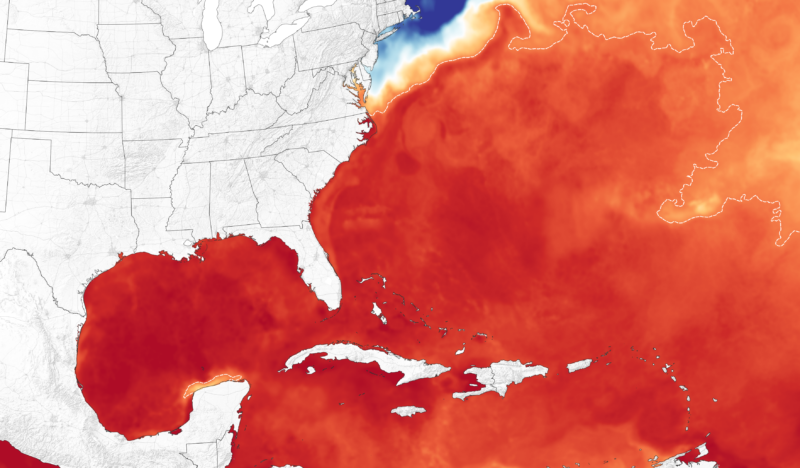A pre-hurricane climate change analysis gets major revision after the storm

Enlarge / Ocean temperatures between 20 and 30C before Hurricane Florence made landfall in North Carolina. (The dashed white line shows the threshold of temperatures warm enough to support a hurricane, around 28C.) (credit: NASA EO)
It was the first scientific attempt of its kind-assessing the impact of climate change on a hurricane before the storm had even made landfall. And the results (which we covered at the time) were remarkable, suggesting that 2018's Hurricane Florence would be dropping 50 percent more rainfall and span an extra 80 kilometers (50 miles) because of a warmer world.
Increased rainfall would hardly be a surprise. Results from many previous tropical cyclones have found that a warmer atmosphere, which holds more moisture, is expected to boost storm precipitation totals. But 50 percent would be exceptional, as previous studies had fallen somewhere between 6 and 38 percent, depending on the storm.
The scientists weren't able to explain why they got that high number at the time, considering they had only a few days to get the model forecast simulations run and out the door. With the benefit of time, the scientists have now published an evaluation of their groundbreaking effort. Unfortunately, it shows that mistakes were made.
Read 11 remaining paragraphs | Comments